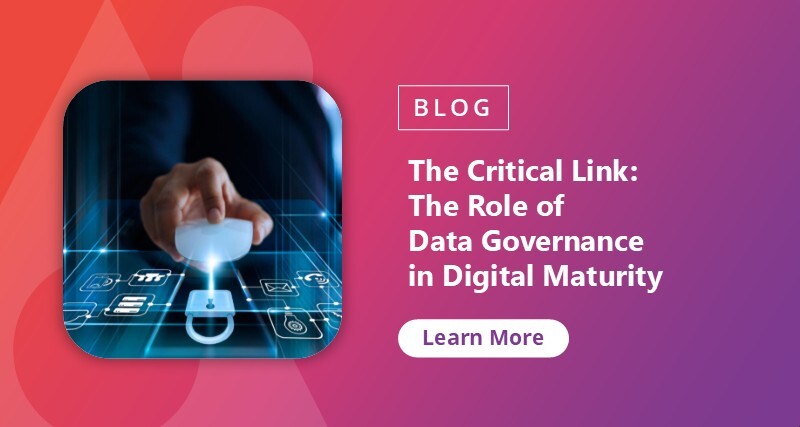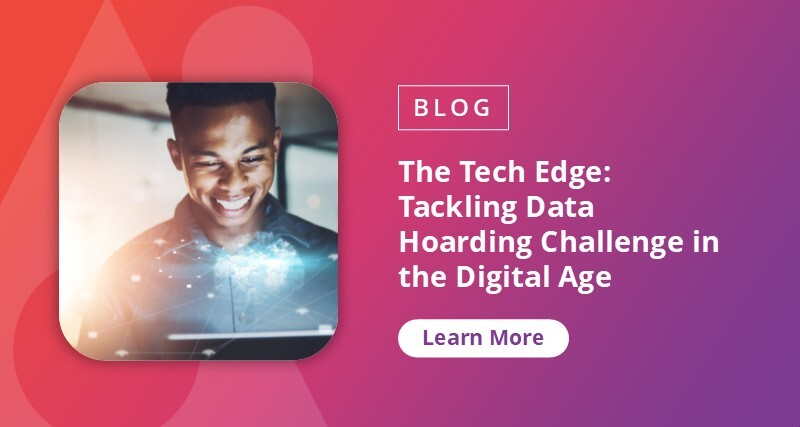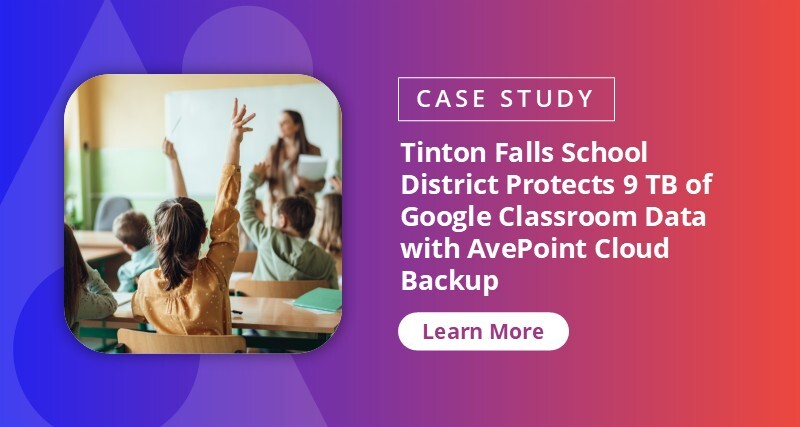Collaboration Without Compromise: Effectively Securing Your Google Workspace Data


As global enterprises increasingly rely on collaborative platforms, the shift to multi-cloud strategies is redefining how organizations must protect their data. According to Enterprise Strategy Group, 88% of organizations agreed that relying on multiple public cloud providers affords them strategic advantages. IDC’s 2024 Cloud Pulse survey also reports that leveraging multi-cloud architectures has become the norm, with 74% of cloud buyers relying on multi-cloud strategies.
For these organizations, relying on more than one cloud provider is a prudent and strategic decision that creates key benefits:
- Boosted disaster recovery and redundancy. Multi-cloud environments allow organizations to quickly shift their data and operations from one cloud to another in case of an outage or a security breach.
- Improved performance and availability. Multi-cloud strategies result in optimized workload distribution, ensuring that no single cloud environment is overwhelmed.
- Increased scalability, flexibility, and solution quality. Organizations can scale their cloud usage up or down and leverage the best features of each cloud service, choosing the most suitable tools for specific tasks based on their strengths.
- Optimized cost management. Aside from avoiding vendor lock-in, organizations can choose the most cost-effective services from a variety of vendors to optimize their spending.
As organizations double down on their efforts to stay on top of their digital maturity targets, one prediction is that their use of multi-cloud environments and AI technology will continue to overlap. Andrea Minonne, research manager, Data & Analytics at IDC, reports that “The growing interdependence between AI innovation and cloud infrastructure is positioning cloud services as the backbone of AI development and deployment.”
Indeed, the integration of AI tools in business operations and the preference for multi-cloud environments have lowered the barriers to generating information, leading to an exponential increase in data production. However, the unmitigated generation of data brought about by the use of these tools can create security gaps that organizations cannot afford to ignore.
Given the unprecedented pace at which data expands in today’s workflows, organizations must rise to the challenge of harnessing unified, multi-cloud security insights and tools that secure data from every risk angle possible.

Google Workspace: Powering Productive Collaboration
Today’s organizations prioritize effective communication and undisrupted workflows, prompting decision-makers to opt for cloud providers that can support these non-negotiables. Google Cloud and Google Workspace are among the top choices for harnessing an effective multi-cloud strategy due to their extensive global reach and comprehensive suite of tools designed to enhance collaboration and productivity.
With a global infrastructure in 40 regions, 100 zones, and over 200 countries and territories, Google was named a Leader in the IDC MarketScape: Worldwide Intelligent Content Services 2024 Vendor Assessment. This extensive network ensures high availability, low latency, and reliable performance, making it an ideal choice for organizations looking for trusted platforms that can facilitate effective communication.
Recently, in stride with the growing demand for digital maturity, Google announced that it would integrate Google AI in Workspace. By incorporating Google Cloud into their multi-cloud strategy, organizations can benefit from its advanced AI and machine learning capabilities, which can help optimize operations, improve decision-making, and drive innovation.
Google Workspace provides a suite of productivity and collaboration tools that are widely used by businesses worldwide. These tools, including Gmail, Google Drive, Google Docs, and Google Meet, are designed to enhance communication and streamline processes, making them particularly beneficial for knowledge workers through:
Enhanced collaboration. Forrester notes that organizations using Google Workspace experience a 30% improvement in collaboration.
Improved information discovery. According to the same report, Google Workspace helps expedite searching for and finding information by 40%.
Accelerated app development. Forrester also highlights that Google Workspace cuts down application development time by up to 80% with AppSheet.
However, security is a top priority in multi-cloud environments due to increased complexity in managing diverse security protocols. There is also a greater need to ensure consistent visibility and control over data, meet varied compliance requirements, and maintain robust identity and access management.
Collaboration and Security Challenges in Multi-Cloud Environments
While Google Workspace offers an extensive global infrastructure and advanced AI capabilities, these can introduce significant security risks if not properly managed. The widespread use of tools like Gmail, Google Drive, and Google Meet can lead to increased exposure to phishing attacks and unauthorized access without robust security measures in place. Similarly, the optimization offered by integrated AI and machine learning can create vulnerabilities when data is not adequately protected.
As for the accelerated app development facilitated by AppSheet, the rapid deployment of applications without thorough security vetting can create security gaps and compliance issues, especially in multi-cloud environments where diverse security protocols must be managed consistently.
These security considerations, combined with the growing volume of data and tools available to organizations, create a complex landscape that business leaders must navigate carefully. The challenges extend beyond just security to fundamental aspects of business operations, affecting how teams make decisions and manage information effectively.
Without the right security insights, organizations facing data expansion may grapple with a slew of information-related hurdles that prevent them from maximizing cloud-based platforms like Google Workspace:
Poor Data Classification
Informed decision-making is a must for business leaders. However, making the right call becomes a challenge with an abundance of data, as not all data is relevant, updated, and classified properly to help facilitate informed decisions. Additionally, the lack of clear organization and prioritization in communication channels can cause critical information to be overlooked, resulting in bottlenecks, delays, and inefficiencies in collaborative efforts.
Data Migration Challenges
Managing data across clouds can be a complex challenge that may exceed the capacity of in-house IT teams. More importantly, transferring and migrating data between different systems can create security gaps, especially when these systems follow varying security protocols and compliance requirements. To ensure data integrity during and after migration, organizations should conduct thorough data profiling, use incremental migration, and implement robust backup and recovery plans. Post-migration, regular audits, continuous monitoring, and cross-referencing data between environments are essential.
Data Silos
The increase in data within an organization introduces the risk of creating data silos, wherein data repositories are limited to a business unit and are, therefore, inaccessible to the rest of the organization. This presents a roadblock to effective collaboration and accurate data analysis, not to mention challenges to data security, as isolated data is difficult to monitor and manage in compliance with appropriate standards. With business leaders placing a premium on collaboration to unlock value, it’s no surprise that data silos are a top concern for 68% of organizations. While the real-time document-sharing capabilities offered by Google Workspace offer a promising solution to break down such silos, organizations must still implement robust permissions management to balance accessibility with the right security requirements.
Increased Risks of Data Breach
The more data an organization has, the more it appears as a lucrative target for cyberattacks, which can overburden IT and security teams. In a report by Dell Technologies, 81% of organizations agree that because of remote work setups, they have increased exposure to data loss from cyberthreats, while 74% are worried that their backup data could be infected or corrupted in the aftermath of a ransomware attack. These concerns are not unfounded, as the cost of falling prey to ransomware is predicted to reach $265 billion annually by 2031.
Expanded Attack Surface
Multi-cloud environments significantly expand an organization’s attack surface through increased data flows and multiple identity management systems. The gaps between cloud providers, like cross-platform service integrations, create vulnerable intersection points that attackers can exploit. These gaps also underline the role of a zero-trust security approach in multi-cloud environments.

From Data-Driven to Security-Driven
In multi-cloud environments, the complexity of managing data security increases inevitably, made more urgent by the need to ensure seamless collaboration remains undisrupted. To address these needs, organizations must adopt solutions that provide unified multi-cloud security insights. With a comprehensive view of data interactions across platforms, these insights can identify potential risks and guarantee consistent security policies are applied.
Unified multi-cloud security tools are fundamental for securing data from all angles of risk. They enable organizations to monitor and protect data across different cloud services, ensuring that security measures are robust and equally important, adaptable to various environments. For instance, organizations using Google Workspace can implement unified security policies across their collaboration tools while maintaining granular control over data access and sharing permissions. This holistic approach mitigates the risk of data breaches and enhances overall data governance.
By leveraging unified multi-cloud security insights and tools, business leaders can confidently streamline collaboration and productivity. These solutions not only safeguard data but also empower organizations to optimize their multi-cloud strategies, ensuring that data security is integrated seamlessly into operational workflows.
For many business leaders, the call to lead a data-driven organization is paramount. In the face of a constantly changing threat landscape and the shift to multi-cloud, being data-driven alone will not suffice. To ensure their future growth and safeguard their business from data loss incidents, organizations must adopt a security-driven approach that goes beyond the coverage intended for single-cloud environments.


Andie is a Content Marketing Specialist at AvePoint, covering migration, employee experience, and education technology. With 15 years of experience in B2B communications and content editing, Andie creates content that helps businesses realize the value of their technological investments.


